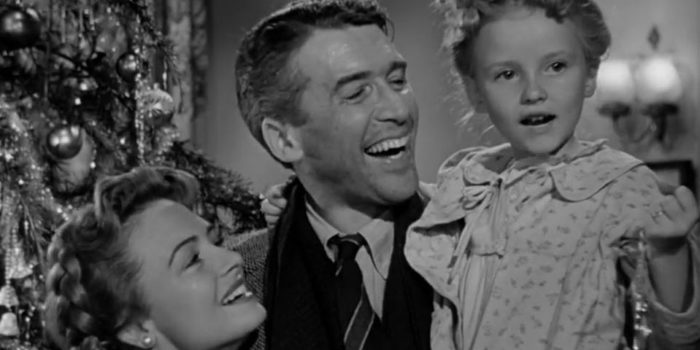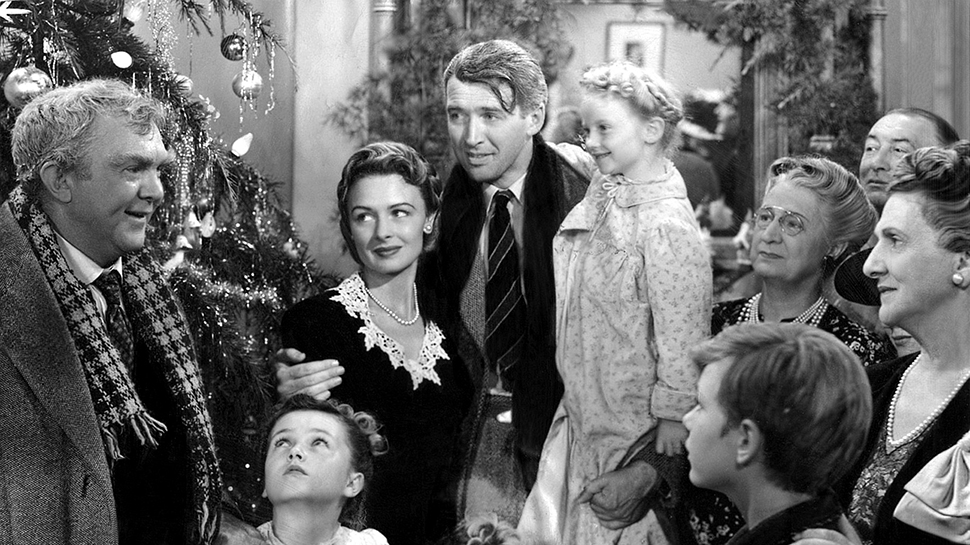
Most people think the best ideas are coming in the future. Jetpacks. Flying cars. Robot butchers.
If they manage corporate relocation programs, there’s a good chance they’ve got one eye on tomorrow, forever seeking the next big app or idea or process automation that will make it even easier to get the right people in the right place at the right time.
And there’s nothing wrong with that. We’re all looking for ways to deploy talent more efficiently, and as relocation professionals, we need to be perpetual students of how technology is disrupting and propelling the workplace.
But as something of an old-fashioned soul, I tend to look to the past for inspiration. For this post, I looked all the way back to 1946, the year that saw the release of a film called It’s a Wonderful Life.
Most people have seen this film, but for those who haven’t, it’s the story of George Bailey, a man living in the small town of Bedford Falls in 1940s America. George spends his life doing amazingly selfless things — he saves his brother’s life, saves a stranger’s life, forgoes college to run the family business and makes homes affordable to his friends and neighbors. But George doesn’t recognize the value in what he’s done, and later, when crisis hits, he tries to end his life, only to be saved by Clarence, a guardian angel who shows George the richness he has brought to so many people just by being alive.
It’s a Wonderful Life is considered a Christmas film, but the lessons of this movie are applicable year-round: No one is a failure who has friends. Everyone’s life has a purpose. Appreciate your blessings. Bad guys don’t always get punished—that one’s my favorite.
But the most remarkable thing about this movie is, for me, that after roughly 7,000 viewings, I began to realize — as crazy as this might sound — that the characters in the film represent the type of people you need in your organization to build a culture that promotes and celebrates workforce mobility.
So work with me here.
The Guardian Angel
We’ll start with Clarence. Every mobile employee could use a guardian angel — or in this case, let’s call them a mentor. Someone to watch over them, make them feel tethered to the organization, help them see the value in what they’re doing and the experiences they’re gaining.
Do you have someone who can get on a call with an assignee once a week? Or Facetime? Or email? Even the simplest bit of connectivity will remind your mobile employees that even though they’re out of sight in the home office, they’re not out of mind. Find the Clarences in your organization.
The Success Story
You also want someone who can share success stories. We’ll call this person the Sam Wainwright. Maybe he had an assignment overseas and it helped advance his career. Maybe she earned a promotion with the company after accepting a move.
Whatever the case, these people can be valuable spokespersons for your program. Hearing just how far Sam’s assignment propelled him can be a powerful motivator for a critical new hire who might be on the fence about accepting a move. If they can wire you $25,000 to help you out of a jam like Sam did for George, that’s even better.
The Warm Reconnector
Now, think about how your mobile employees feel when they return from their assignment. Maybe they’ve been gone one year, or two, or five. A lot can change in a company in that time, and what felt as cozy as Bedford Falls when they left can seem as foreign as Pottersville when they get back.
This is where you need someone as reliable as Ernie the cab driver. Someone who can help ease them back into the organization and explain things you take for granted, like why someone else is now sitting at “their” desk or how to operate the new copy machine.
Yes, a solid repatriation or reboarding plan is critical, but having an actual human being to serve as that warm connector back to the company to ensure that they reassimilate on a personal level can reduce your risk of losing that talent, not to mention the expanded skill set they’ve gained while on assignment.
The Village
In the famous final scene of It’s a Wonderful Life, George’s friends and family, and even the strangers he’s helped throughout his life, band together to save him. The lesson here is that sometimes, to achieve your goals, it truly does take a village. Similarly, as a mobility professional, you shouldn’t overlook internal and external resources, like your relocation service provider or your marketing department.
These groups can help you communicate the advantages of your program and may also be able to repurpose existing communication content especially for your mobile employees, in the form of a newsletter, online forum, or social media channel.
The Heart, Soul, and Brains
Last, but certainly not least, you need a Mary. If you watch the movie closely, you’ll see that Mary is the heart and soul and brains of the family… and perhaps even the entire town. In fact, she’s the one who really saves George at every turn.
In your company, when it comes to your mobility program, you’re the Mary. As the program manager, you have to be the glue, the enthusiasm, the one who helps employees understand how amazing a relocation can be. They can hear it from anyone else in the company, but they have to believe in you first.
The Final Realization
All right, so a little of this — maybe a lot of this — was tongue-in-cheek, but I hope you got at least a few good points out of it. Because at the end of every relocation or assignment, you want your mobile employees to come to the same realization that George Bailey did at the end of the film:
To paraphrase: that it really was a wonderful relocation, and what a shame it would have been if they’d never taken it at all.

This article originally appeared in the October 2018 issue of Mobility magazine. You can read the online version here.